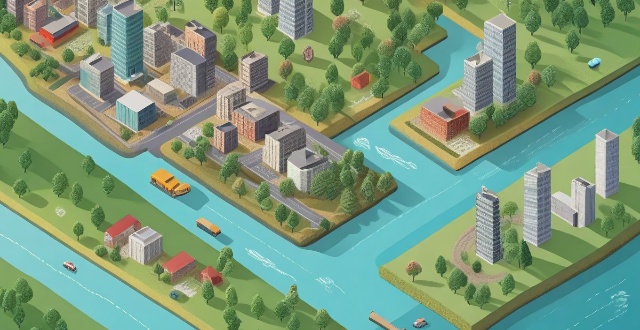Changes in precipitation patterns, often linked to climate change, have significant implications for urban drainage and water management systems. These alterations can lead to increased frequency and intensity of storm events, which places a strain on existing infrastructure and necessitates adaptation strategies. Key considerations include increased storm intensity and frequency, the urban heat island effect, runoff management, water quality concerns, and ecosystem impacts. Strategies for adaptation include green infrastructure, rainwater harvesting, decentralized water management, stormwater regulations, integrated water resource management, smart technology, community engagement, and sustainable drainage systems. The shifts in precipitation patterns demand a comprehensive approach to urban drainage and water management that emphasizes resiliency, sustainability, and adaptability. By integrating innovative technologies, green infrastructure, and community participation, cities can better cope with these changes and safeguard their environments and populations from the adverse effects of extreme weather events.

Impact of Changes in Precipitation Patterns on Urban Drainage and Water Management Systems
Changes in precipitation patterns, often linked to climate change, have significant implications for urban drainage and water management systems. These alterations can lead to increased frequency and intensity of storm events, which places a strain on existing infrastructure and necessitates adaptation strategies.
Key Considerations:
1. Increased Storm Intensity and Frequency: More intense rainfall requires drainage systems that can handle higher volumes of water in shorter periods. This may result in the need for larger pipes, additional storage facilities, or improved treatment plants.
2. Urban Heat Island Effect: Cities tend to be warmer than surrounding rural areas due to heat absorption by dark surfaces and reduced vegetation. This can lead to more localized convective storms, further complicating urban drainage needs.
3. Runoff Management: With increased impervious surfaces in cities, rainwater has less opportunity to infiltrate the ground and is instead directed into drainage systems. This leads to increased runoff volumes and potential flooding issues.
4. Water Quality Concerns: Heavy precipitation can cause combined sewer overflows (CSOs), where stormwater and sewage mix and are discharged untreated into waterways, affecting water quality.
5. Ecosystem Impacts: Altered precipitation patterns can disrupt natural hydrological cycles, affecting wetlands, streams, and other ecosystems that rely on consistent water levels.
Strategies for Adaptation:
- Green Infrastructure: Implementing green roofs, rain gardens, and permeable pavements can help manage runoff and reduce the burden on traditional drainage systems.
- Rainwater Harvesting: Collecting rainwater for reuse in non-potable applications reduces demand on potable water supplies and helps with flood control.
- Decentralized Water Management: Distributed systems like rainwater harvesting and localized treatment can improve resilience by reducing reliance on centralized infrastructure.
- Stormwater Regulations: Updated building codes and regulations can mandate the inclusion of features that mitigate stormwater impacts, such as requiring certain percentages of impervious cover to be offset with green space.
- Integrated Water Resource Management: This approach considers all water sources—surface water, groundwater, and reclaimed water—for efficient allocation and use.
- Smart Technology: Utilizing sensors and real-time data analysis can help operators make quick decisions during storm events to manage flows effectively.
- Community Engagement: Engaging residents in water conservation efforts and awareness campaigns about stormwater management can lead to collective action towards sustainability goals.
- Sustainable Drainage Systems (SUDS): These systems mimic natural processes to slow down, filter, and infiltrate stormwater close to its source, reducing both quantity and pollution load entering drains.
Conclusion:
The shifts in precipitation patterns demand a comprehensive approach to urban drainage and water management that emphasizes resiliency, sustainability, and adaptability. By integrating innovative technologies, green infrastructure, and community participation, cities can better cope with these changes and safeguard their environments and populations from the adverse effects of extreme weather events.